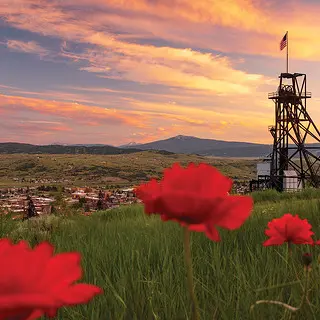
14 Travel Destinations Recommended by Preservation Experts
For the past few decades, the National Trust Advisors—hundreds of highly accomplished professionals working in the preservation field—have shared their insights and experiences with the National Trust for Historic Preservation, helping to support the organization’s priorities. To honor the National Trust’s 75th anniversary year and salute the volunteer group’s dedication, Preservation invited a handful of current advisors to share their expertise with us: We asked them to recommend United States travel destinations where the impact of historic preservation is clear. Below you’ll see a selection of their thoughtful answers, a curated list of memorable and meaningful destinations around the country.
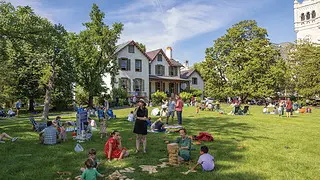
photo by: Brian Rimm
A spring event at President Lincoln's Cottage, a National Trust Historic Site.
Linda Dishman, former president and CEO, Los Angeles Conservancy
Academy Museum of Motion Pictures, Los Angeles
The museum tells the fascinating history of moviemaking through its galleries and special exhibitions. What I have not seen mentioned there in depth is the story of how a historic May Company department store, which today houses the museum, was saved. The 1939 building is the best example of Streamline Moderne architecture remaining in Los Angeles. In 1991 a developer proposed demolishing the building for a massive new project. Through the L.A. Conservancy’s advocacy with community partners, City Councilmember John Ferraro supported designation as a local landmark. The developers ultimately sold the property to the adjacent Los Angeles County Museum of Art, which used it as exhibit space until the Academy came forward. Thirty years after the threat of demolition, the building reopened as the Academy Museum. This project is a great example of finding a new use for a significant building so it can continue to serve the community.
President Lincoln’s Cottage, Washington, D.C.
Visiting Lincoln’s Cottage truly expanded my understanding of Lincoln. Seeing how close the Soldiers’ Home and military cemetery were to his house, close enough to witness widows and mothers mourning at the graveyard, truly puts in perspective how he understood the cost of war. The buildings provide a deeper context to the history that most Americans know. It is one of the most powerful historic sites that I have ever seen.
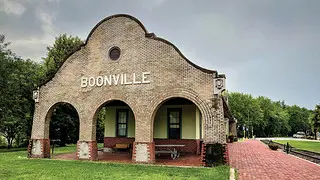
photo by: Marek Uliasz/Alamy
The Boonville, Missouri, railroad depot.
Carroll Van West, professor and director of the Center for Historic Preservation at Middle Tennessee State University
Butte, Montana (shown at top)
A rich tapestry of ethnic groups—more than a dozen—have shaped Butte since the late 19th century, meaning there are beautiful, compelling places of worship from the B’nai Israel Temple building to the historic AME church; taverns, bars, and restaurants with the most amazing vibes and food; and people of all types, all proud of their traditions and what they have built together in Butte. The Montana Folk Festival takes place there every July, which is generally the best time for tourists to visit. Then there is the outdoor recreation in the city itself: a series of mile-high trails and bike paths that take you—via restored industrial landscape—into the copper kingdom that once caused Butte to be described as “the richest hill on Earth.”
Fisk University and Jefferson Street, Nashville, Tennessee
Jefferson Street is the counternarrative to Nashville’s Music Row. A place where Black gospel, R&B, and rock artists performed, and still can bring down the house. Jimi Hendrix? Yep, he played there. The Fisk Jubilee Singers? The city’s musical prominence began with them over 150 years ago. The Fisk campus is an architectural jewel, along a vibrant cultural, religious, and commercial thoroughfare for Black life in the state capital city. The legacy of the Harlem Renaissance is represented there in the Aaron Douglas murals at the administration building. The John Hope and Aurelia E. Franklin Library holds the nation’s most comprehensive records of the Rosenwald School building program. Need more? Try Jubilee Hall, built circa 1875, from the proceeds of the Jubilee Singers’ tour of the northern U.S., Europe, and Great Britain. (They even performed for Queen Victoria.) It’s a National Historic Landmark!
Stay connected with us via email. Sign up today.
Boonville, Missouri
One of the great Western trails, the Santa Fe Trail, begins in the area, on the north side of the Missouri River. On the south side is a historic hotel along the riverbank that is a great place to see and hear not only the river, but the tracks and sounds of the railroad that stretched across the West. Great restaurants and bars still take care of visitors’ needs, as similar businesses did 200 years ago. An old warehouse has been preserved as the Rivers, Rails & Trails Museum, a fascinating local history museum that addresses so many of the trends that shaped the great American Midwest.
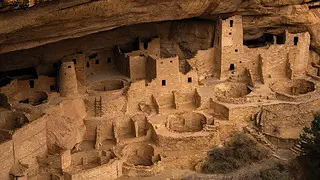
photo by: Visit Durango
Mesa Verde National Park in Southwest Colorado.
Theresa Pasqual, executive vice president of Indigenous affairs, Crow Canyon Archaeological Center
Bandelier National Monument, Los Alamos area, New Mexico
Home to ancestral Pueblo villages and sites, Bandelier lies within the Pajarito Plateau area, near the Jemez Mountains. It is both culturally rich and abundant in beautiful viewsheds and wildlife. Designated in 1916 as a national monument, it also houses the Bandelier Civilian Conservation Corps (CCC) Historic District, the largest concentration of CCC buildings in the National Park Service.
Los Luceros Historic Site, Alcalde, New Mexico
Los Luceros is located on the banks of the Rio Grande River. The ancestral homelands of Tewa-speaking people, the site features a Territorial-style adobe hacienda, Victorian-era cottage, chapel, orchard, farmland, and views of the Rio Grande from the shade of cottonwood trees. It’s easy to understand, when there, why ancestral Pueblo people and Spanish settlers were drawn to this land abundant in good soil, water, and wildlife.
Mesa Verde National Park, Colorado
Located between the towns of Cortez, Colorado, and Durango, Colorado, Mesa Verde National Park has deep connections to 27 Pueblos and Tribes. Mesa Verde offers a glimpse into the past and helps the visitor connect to other stories that take place at Chaco Culture National Historical Park, Bears Ears National Monument, Chimney Rock National Monument, and Aztec Ruins National Monument, as part of understanding Pueblo and other Tribal movement throughout the Southwest.
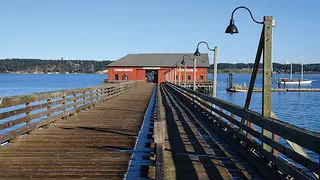
photo by: Ian Dewar/Alamy
The pier overlooking Penn Cove in Coupeville, Washington, part of Ebey's Landing National Historical Reserve.
Jennifer Meisner, historic preservation officer, King County, Washington
The Lodge at St. Edward State Park, Kenmore, Washington
This monumental 1931 former seminary building is the centerpiece of Saint Edward State Park, a beautifully terraced, 326-acre designed landscape surrounded by dense forest at the northern tip of Lake Washington. Designed by notable architect John Graham Sr., the immense structure was sold to Washington State Parks in 1977 but fell into steady deterioration. It was saved and transformed into a stunning hotel, spa, and meeting venue that opened to the public in 2021 through a public-private partnership with Daniels Real Estate, whose president, Kevin Daniels, is a former trustee of the National Trust for Historic Preservation. Plan a weekend stay or stop in the gorgeous dining room for a modern take on high tea after a morning exploring the park.
Ebey’s Landing National Historical Reserve, Whidbey Island, Washington
Getting to Ebey’s Landing, a 17,572-acre National Historical Reserve in the heart of Whidbey Island, is a picturesque journey—whether by a short ferry ride from the mainland to the south or a scenic drive through Deception Pass to the north. Once there, take a walk along the bluff with sweeping views of Puget Sound, enjoy a bike ride through rolling farmland dotted with majestic heritage barns, explore Fort Casey’s historic battlements, or stroll down Coupeville’s charming main street and wharf—then cap off your day with a delicious lunch of locally harvested Penn Cove mussels. Ebey’s Landing is a perfect getaway for families, outdoor enthusiasts, and history buffs alike. It’s truly one of my favorite places.
Snoqualmie, Washington
The city of Snoqualmie is located 25 miles east of Seattle in the upper Snoqualmie Valley, nestled in the foothills of the Cascade mountains. Named for the Snoqualmie Indian Tribe, whose Lushootseed name is sdukʷalbixʷ, the area is best known for nearby Snoqualmie Falls, where water cascades 268 feet over granite cliffs. Downtown Snoqualmie boasts a charming historic commercial district near the Snoqualmie River, where a variety of community events and festivals take place throughout the year. Visitors can board the Snoqualmie Valley Train for a two-hour excursion through the scenic countryside from the historic Snoqualmie Depot, located in the heart of downtown. The Snoqualmie Falls Hydroelectric Museum and Park, along with the Northwest Railway Museum’s History Campus, are also must-see attractions.
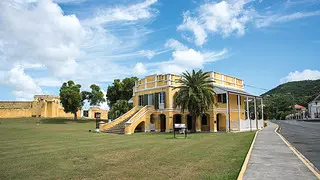
photo by: Elizabeth Given/Alamy
The Danish Customs House is part of Christiansted National Historic Site on St. Croix.
Gerville R. Larsen, architect, principal, and owner, Taller Larjas
United States Virgin Islands
The U.S. Virgin Islands, formerly the Danish West Indies, are colonized lands rich in cultural resources, with a long lineage of Indigenous artifacts as well as historic structures and artifacts created by enslaved Africans.
I live on St. Croix so I am a bit biased. The entire island is a National Heritage Area, with two historic towns—Christiansted and Frederiksted—that are National Register–listed historic districts. St. Croix is strewn with masonry and wooden structures, erected by enslaved Africans during its dark plantation era, that have become our patrimony. You can become immersed in a period of time that reflects the resilience and perseverance needed to overcome heinous hardships. This testament to our ancestral ingenuity and superior craftsmanship can be seen by walking down many of our town streets. There is a need for more historic preservation, yet each town has several pockets of wonderful restoration efforts.
Charlotte Amalie, St. Thomas, which is the capital of the USVI, also has seen many restoration projects. Cruz Bay on St. John is the most recently created National Register–listed historic district in the islands. The Virgin Islands Historic Preservation Commission and the Virgin Islands State Historic Preservation Office are still refining existing guidelines to align preservation work with the needs of the small town.
All four towns were founded prior to the founding of the United States of America: Charlotte Amalie, 1691; Christiansted, 1734; Frederiksted, 1751; and Cruz Bay, 1766.
Some interesting facts that tie the USVI to the founding of the USA: Although born in Nevis, Alexander Hamilton grew up in Christiansted. His experience here in this mercantile town shaped his views on government and economics, which influenced how he set up the U.S. Treasury Department. Frederiksted was one of the first ports to recognize the flag of the newly created USA. And other Revolutionary ties existed between here and the U.S. during that period of time.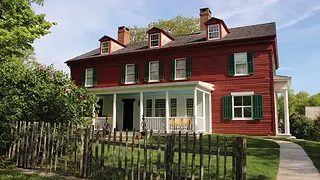
photo by: National Park Service
Weir House at Weir Farm National Historical Park. The park is part of the National Trust's Historic Artists' Homes and Studios program.
Alicia Leuba, former vice president of resource management, National Park Foundation
Weir Farm National Historical Park, Fairfield County, Connecticut, followed by more stops along the Connecticut Art Trail
Weir Farm is a hidden gem in Connecticut. It was the first national park established in the state. Particularly in spring, summer, and fall, the bucolic nature of the landscape and the opportunity to engage in art making and art appreciation is really robust. Because it’s part of the trail—which contains many beautiful historic sites—it’s easy to put together an itinerary that takes you through the Connecticut art world, including Impressionism, contemporary art, and Midcentury Modern design.
Castle Hill on the Crane Estate, Crane Beach, and Appleton Farms, Essex County, Massachusetts
The Crane Estate is the crown jewel of the North Shore, in my opinion. It’s owned and managed by The Trustees of Reservations, which also owns historic Appleton Farms. The two paired together are a wonderful way to spend a day. Castle Hill is the former summer residence of the Crane family. There’s also a beautiful beach and walking trail with access through the Great Marsh and dunes. You can take tours, get a meal, sunbathe, hike, kayak, birdwatch—it’s a great place to spend a day or a couple of days. There’s also an inn on the property, the Inn at Castle Hill. From there, so many incredible places lie within close driving distance on the North Shore.
Appleton Farms is one of the oldest continuously operating farms in the country. It has great public programming and a farm store, and farming activities still continue today. It and the Crane Estate are about 15 minutes apart.
Donate Today to Help Save the Places Where Our History Happened.
Donate to the National Trust for Historic Preservation today and you'll help preserve places that tell our stories, reflect our culture, and shape our shared American experience.



